GREEN BAY – She began by just sewing some coaches' names onto their shirts in the mid-1990s, all by her lonesome in some unseen corner of Lambeau Field.
Twenty-seven years later, head seamstress Marge Switzer is heading off into retirement and leaving behind a department of five, plus intern and part-time assistance, all in the name of helping the Green Bay Packers look and feel their best on the field.
Switzer, who's become known to frequent visitors to packers.com through several videos and photo galleries posted on the website over the years, officially retired last week. One of the most diligent yet unassuming but recognizable team employees, she took a few moments to reflect on her career.
"I did not apply for it, I did not fill out a job application, nor did I interview for the job," she said of the gig, which she landed during the Mike Holmgren era via connections to longtime Packers assistant equipment manager Bryan Nehring's mom at St. Norbert College, and to former director of retail operations Kate Hogan, who needed some help in the Packers Pro Shop.
They introduced her to longtime equipment manager Red Batty, and the rest is history.
"I had no clue if I'd last a year," she said. "There weren't any models. No other team had a seamstress. They had the lady at the dry cleaners, the lady who sewed out of their home…
"I just worked in the basement below the locker room in the old building on a cafeteria table with just myself and my books on tape, and one sewing machine."
Soon enough one sewing machine became two, and the Packers kept her busy enough that after a half dozen years she gave up her own monogramming and embroidery business to work for the team full-time.
She established a wardrobe system to keep track of all the players' and coaches' clothing, improving the process from sewing numbers or initials onto the articles to eventually using names, so there'd be no mix-ups.
"It's the importance of letting a player know this is yours, and 16 other people haven't worn it," she said. "Even though we have a phenomenal laundry system here, there's something about wanting to wear your own stuff."
And nothing's more important than the game uniform, of course. The shiny green-and-gold jerseys and pants aren't just pulled out of a box and hung in the players' lockers.
They're altered and tailored, for safety and comfort, to the specifications of every player, preferences that can change from one season to the next, or even between games.
"They can't have it tailored on a whim," she said. "They know what they want, they know what they feel good in, and I have a theory that if you look good and feel good about what you have on, you'll feel better about everything.
"Our goal is to make sure they never, ever go out on the field unless it's exactly the way they wanted it…until next week when they change their mind," she laughs.
Take a look back at memorable photos of Marge Switzer's career as the seamstress for the Green Bay Packers.




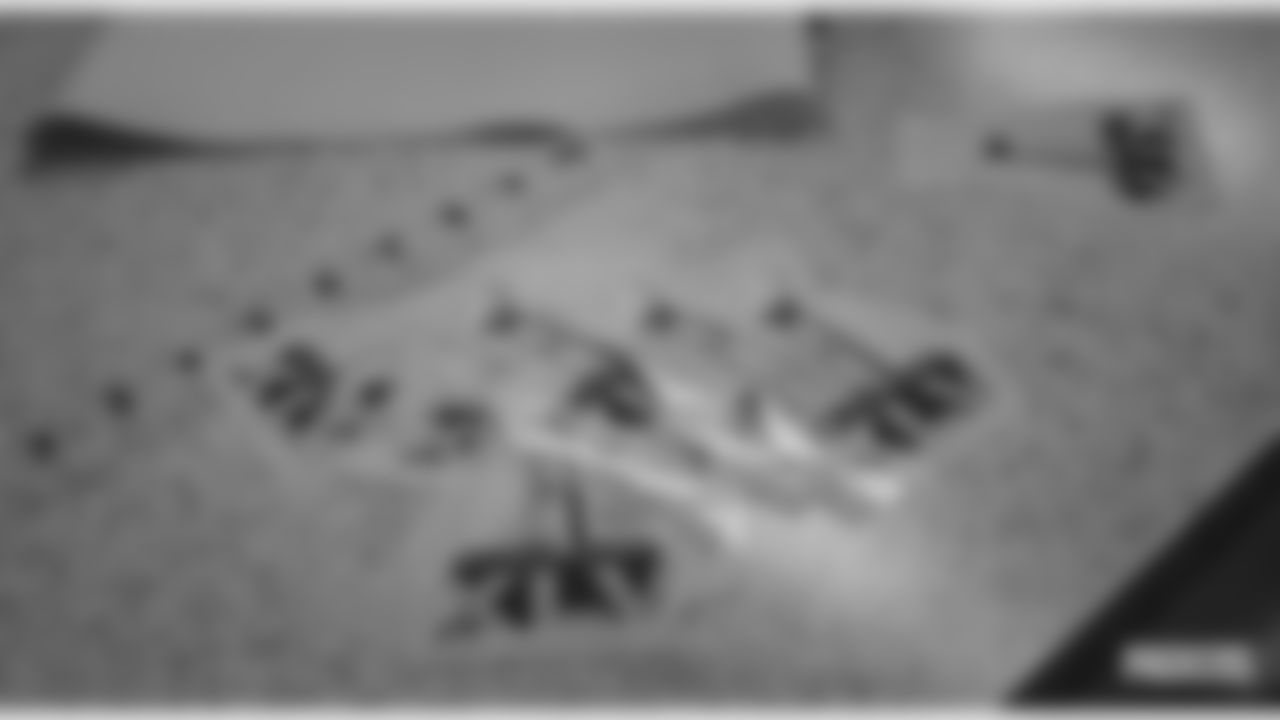


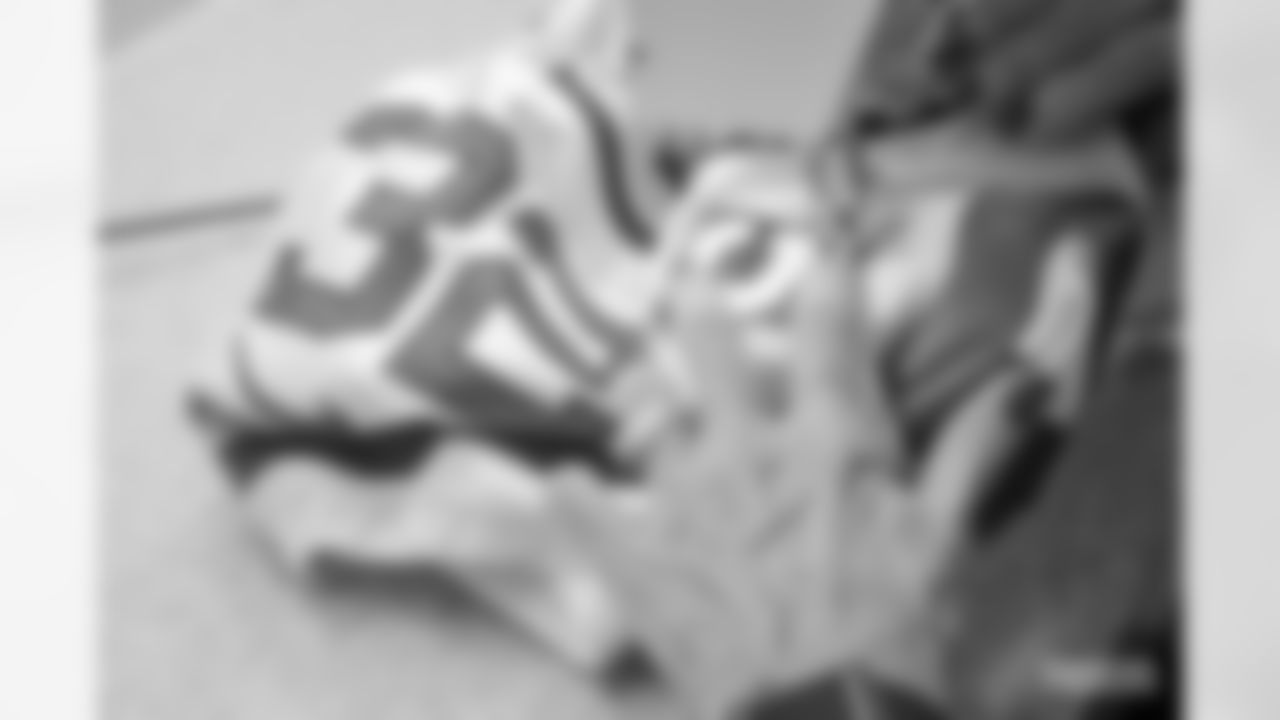









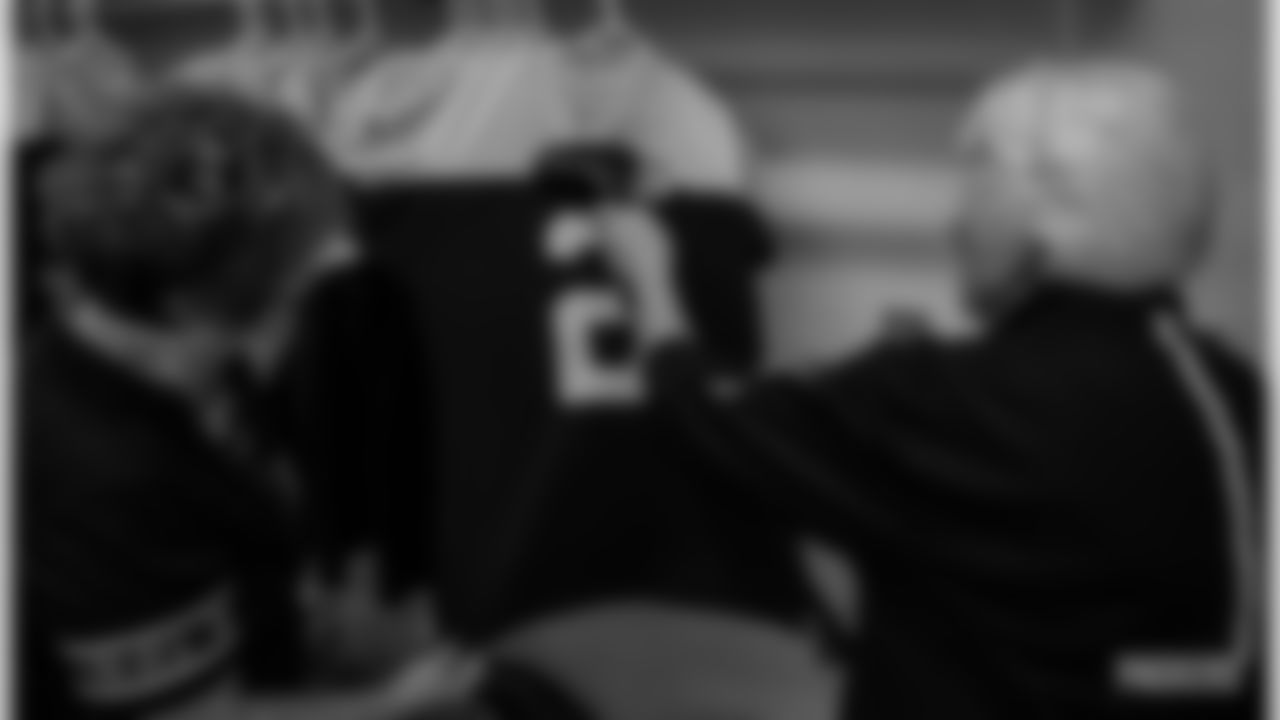





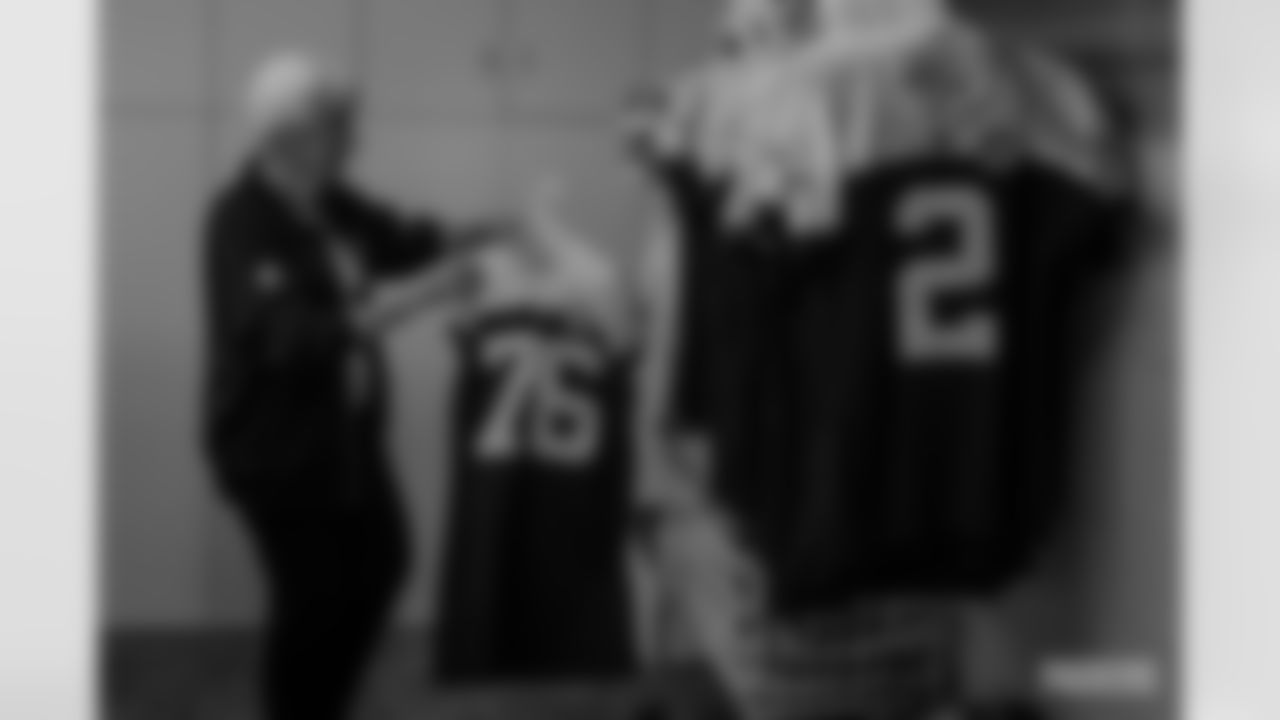
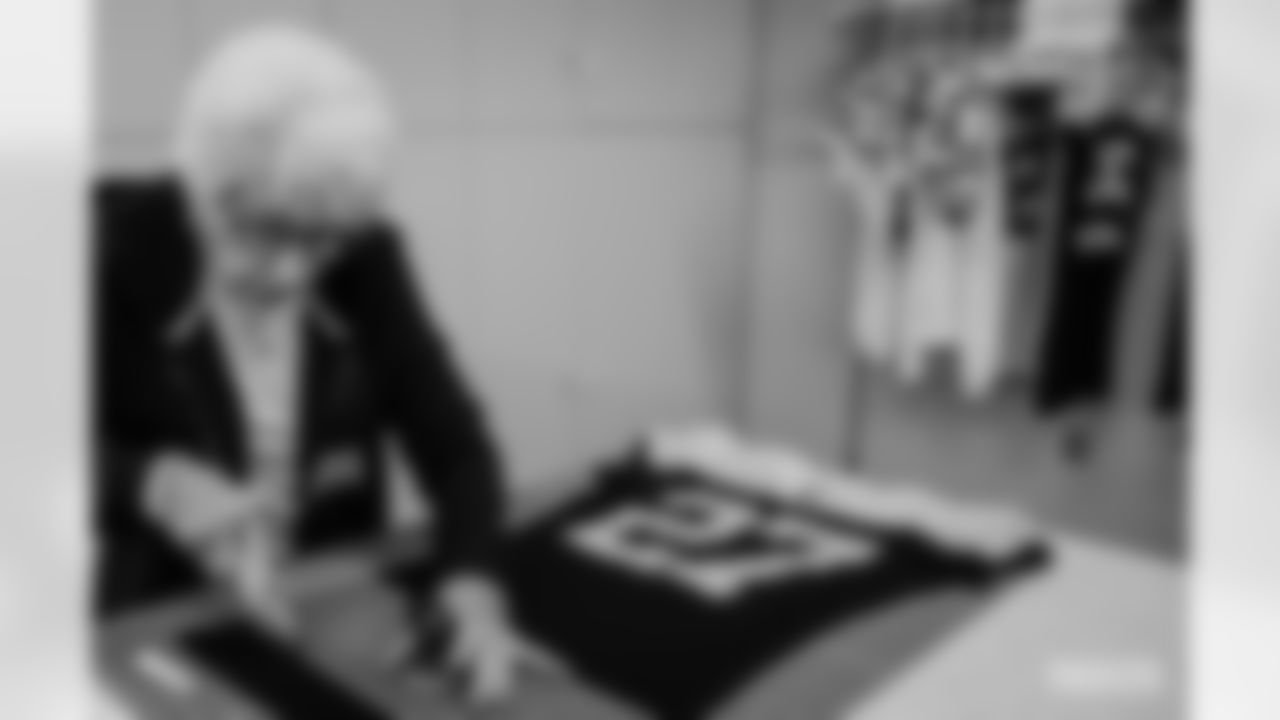




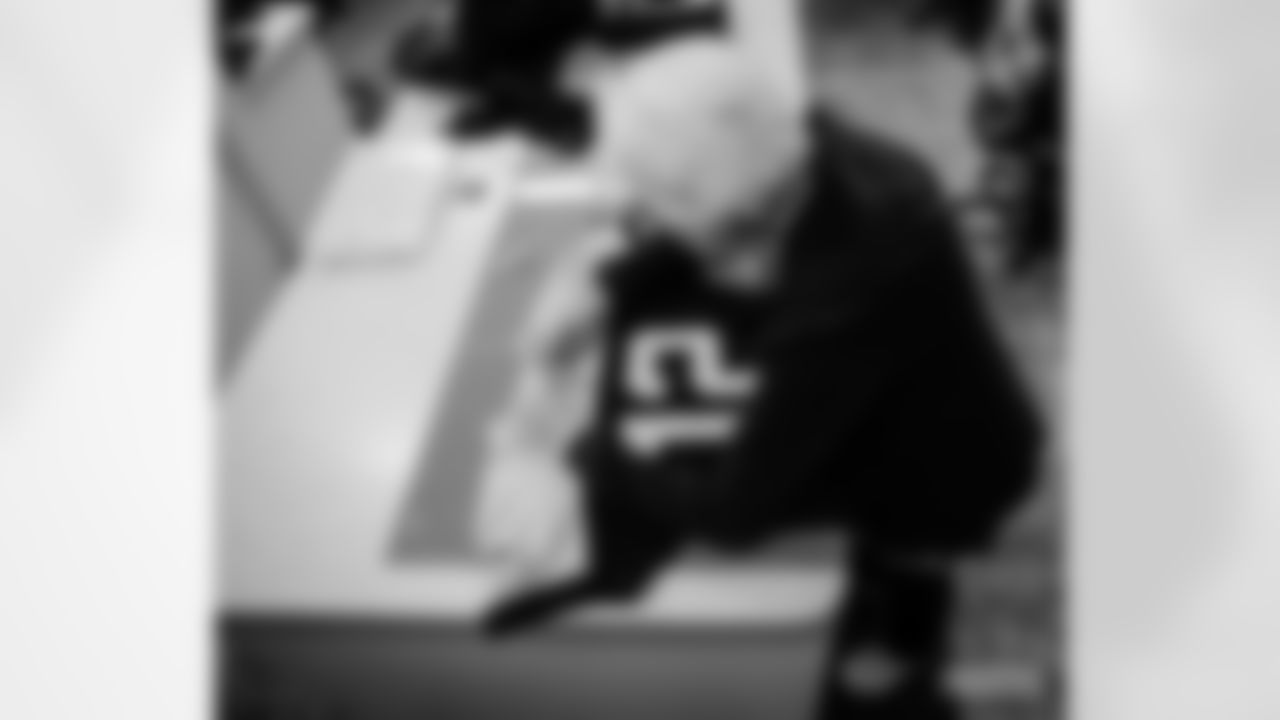



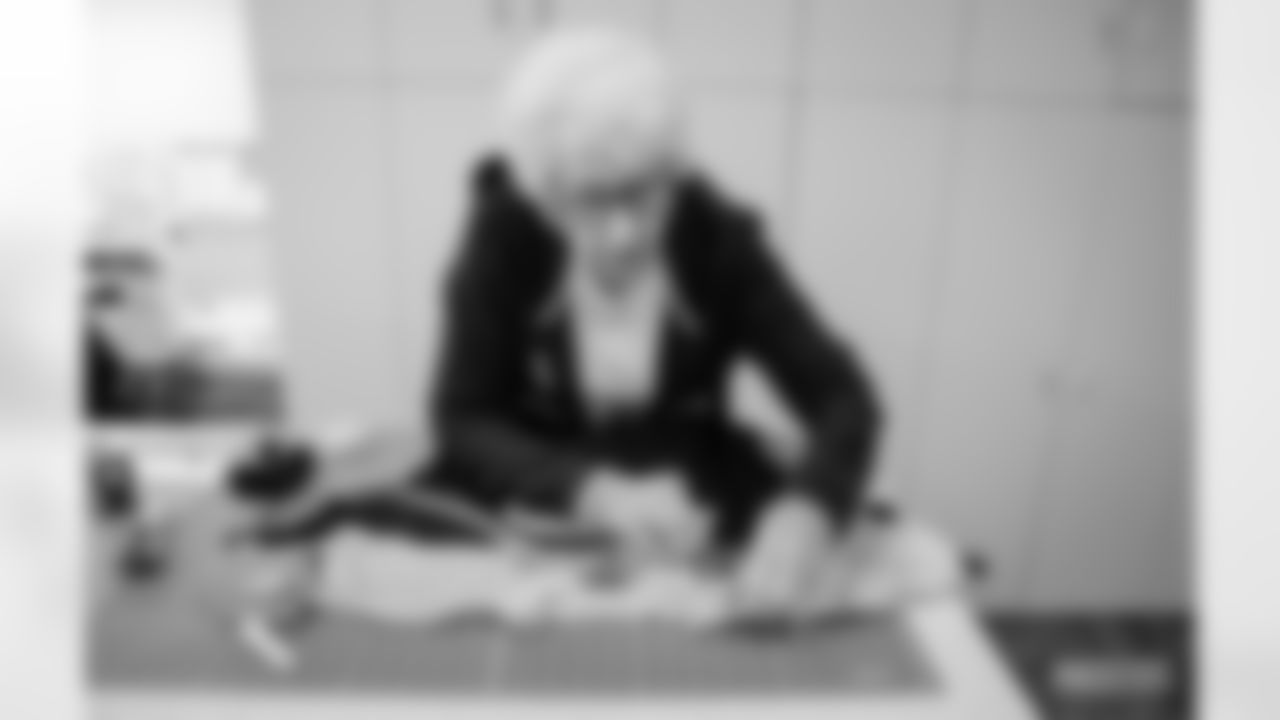

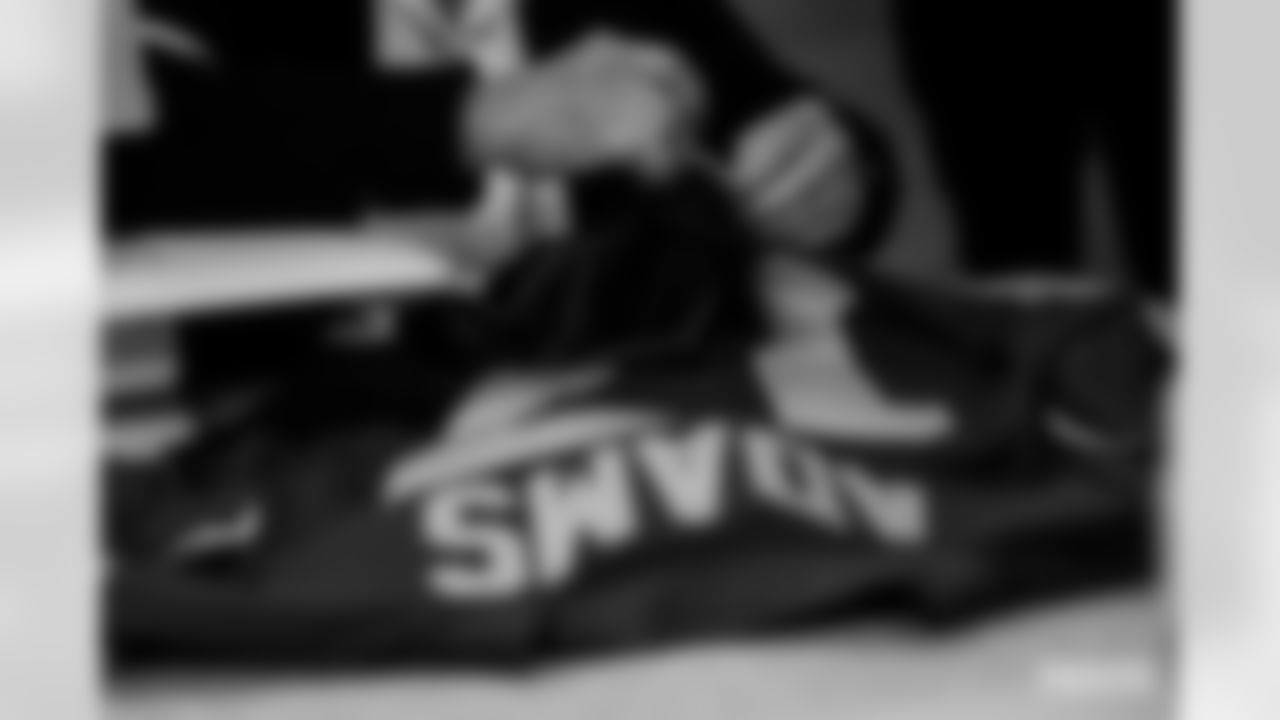



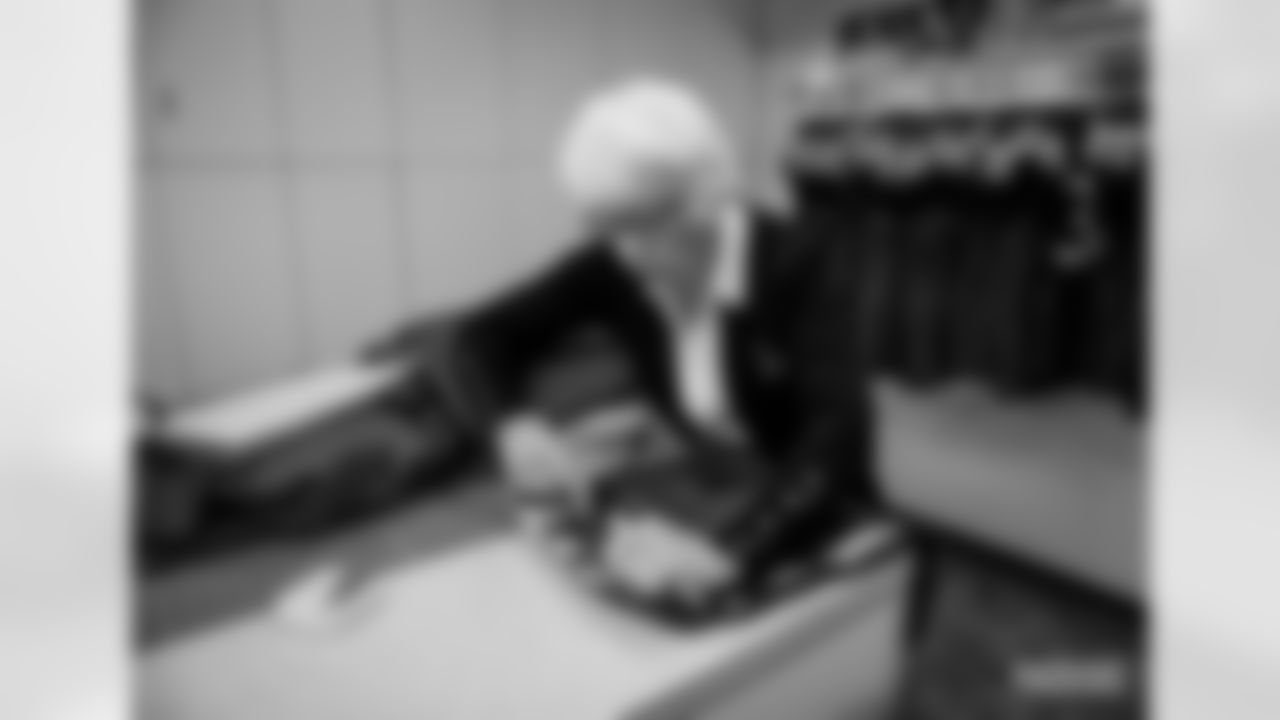


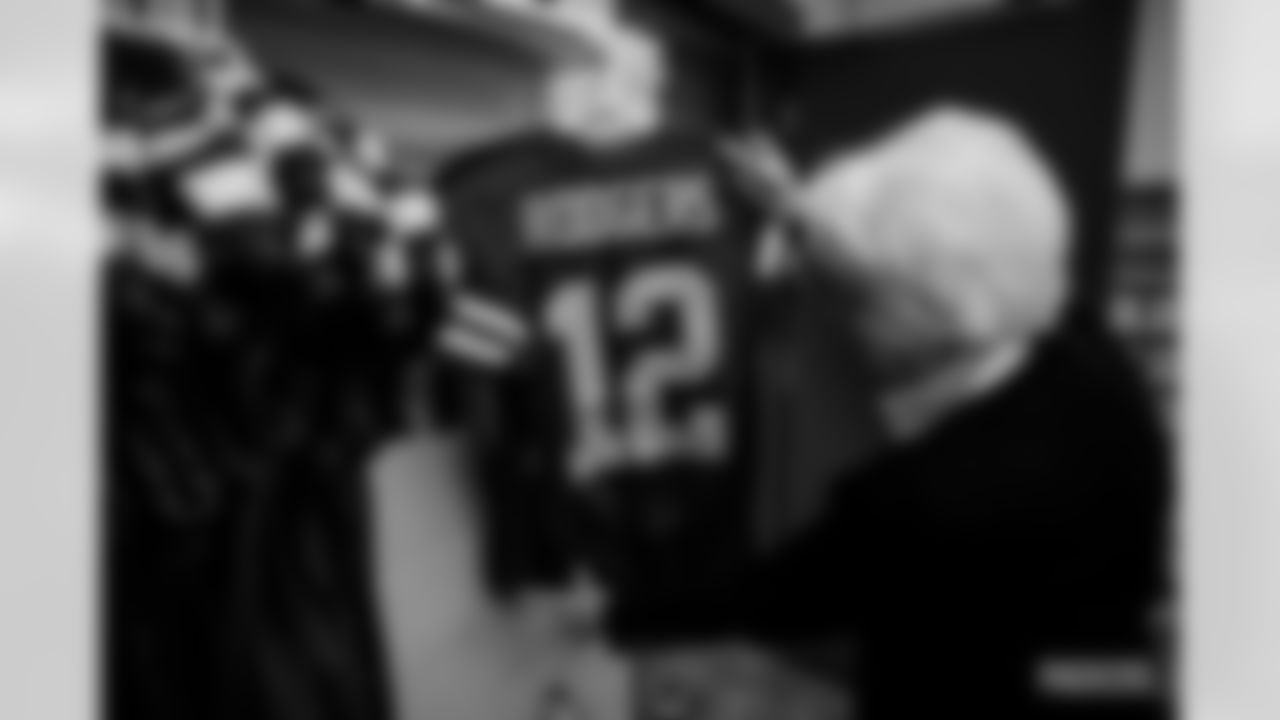

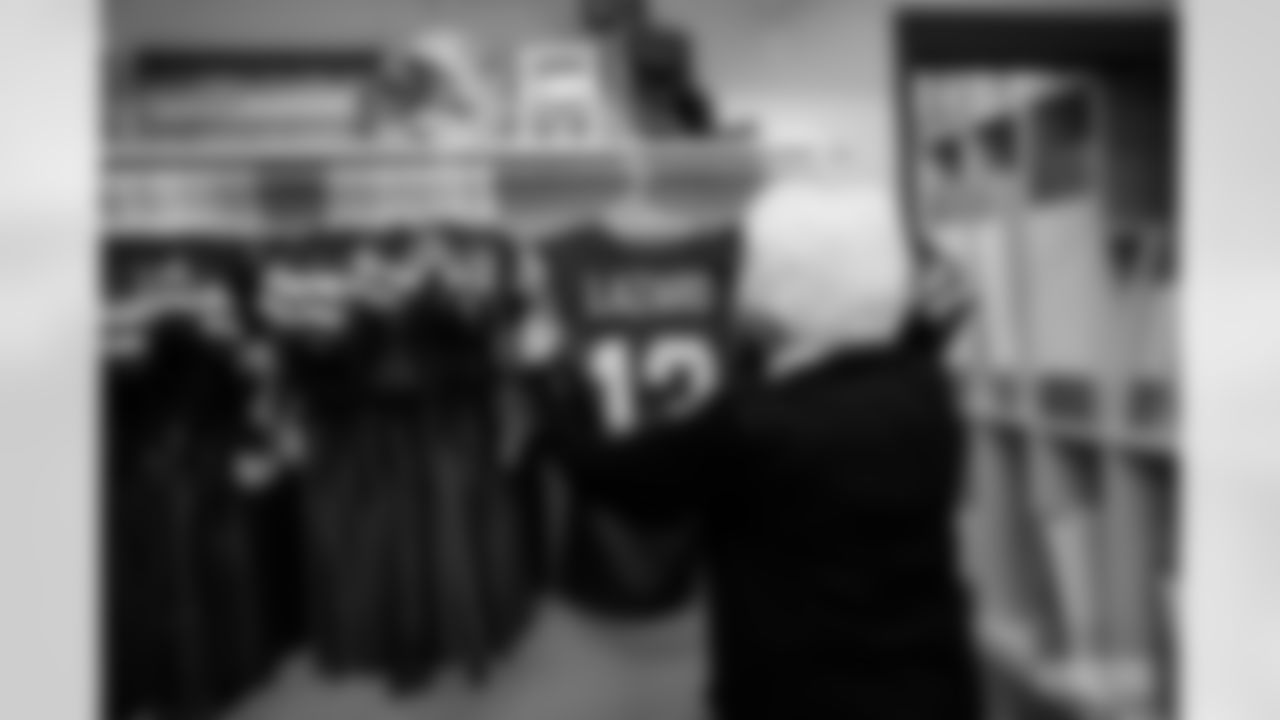
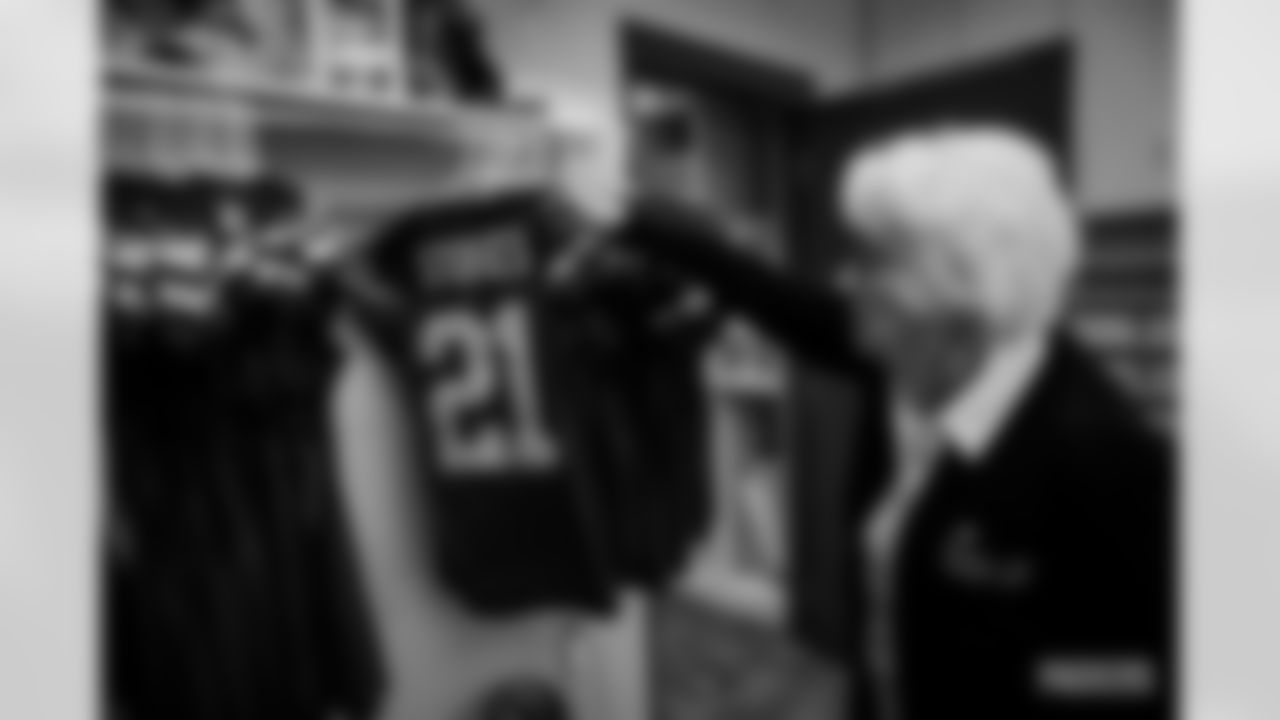
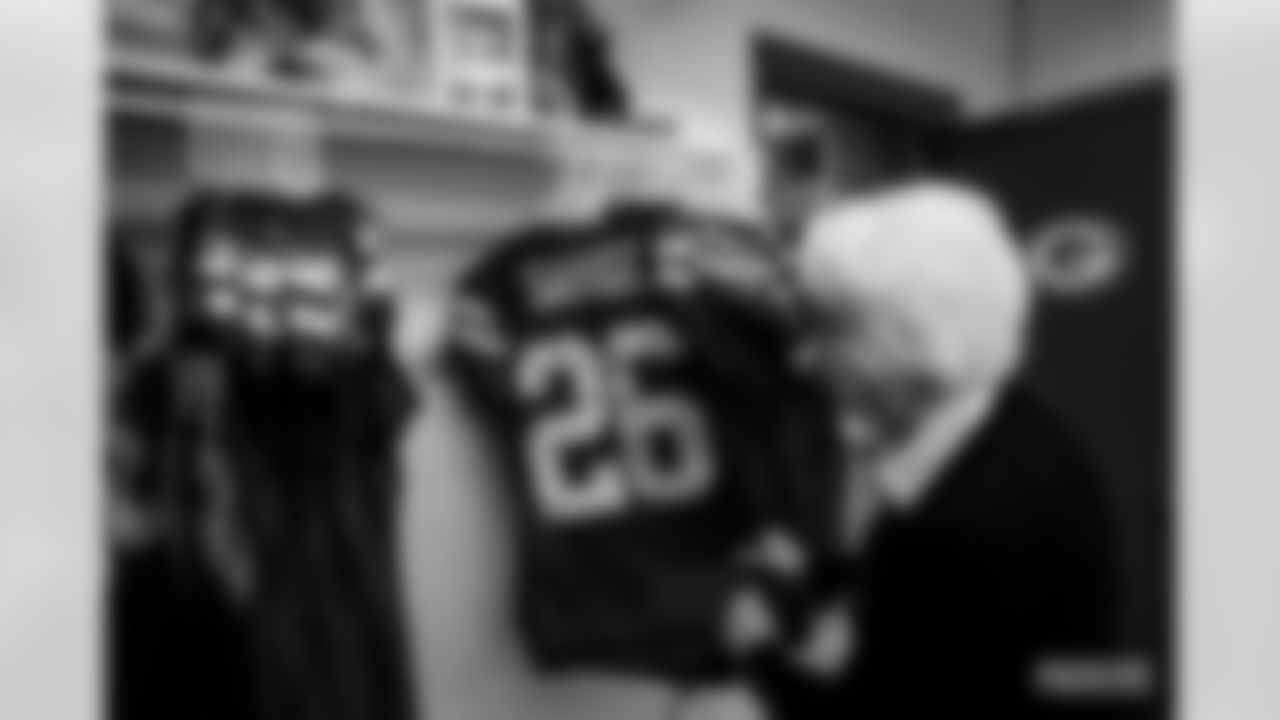
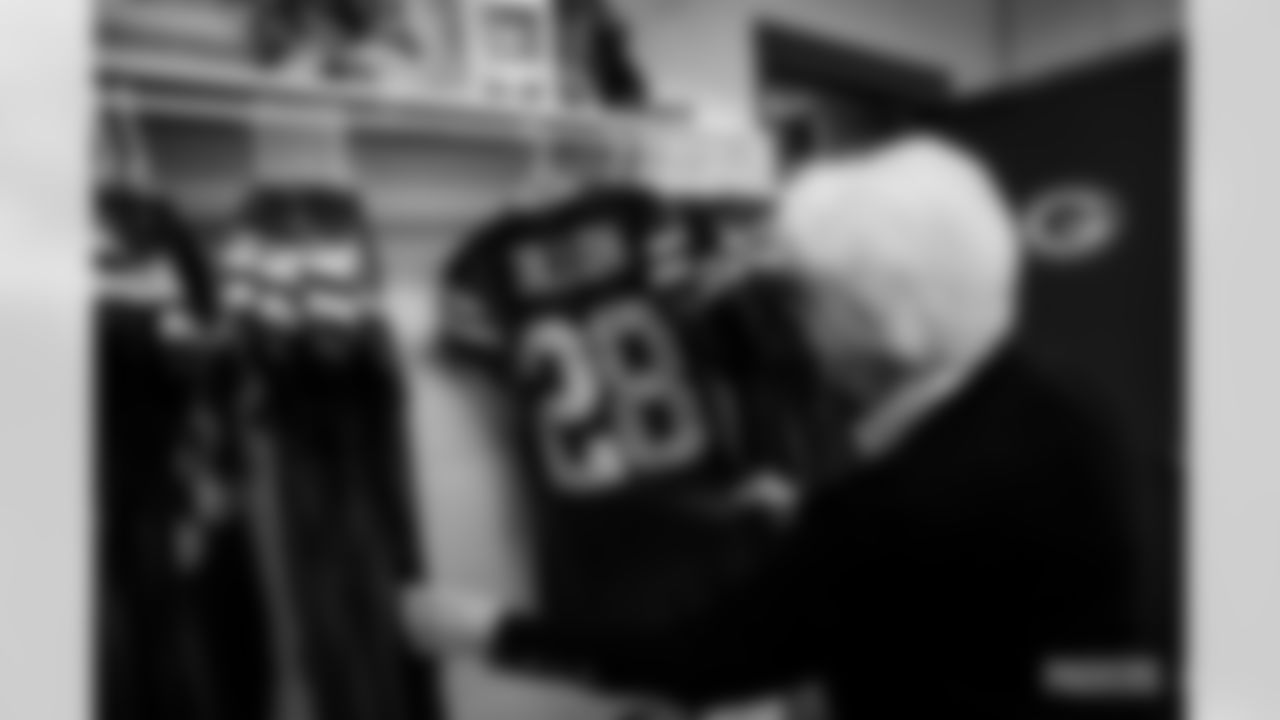
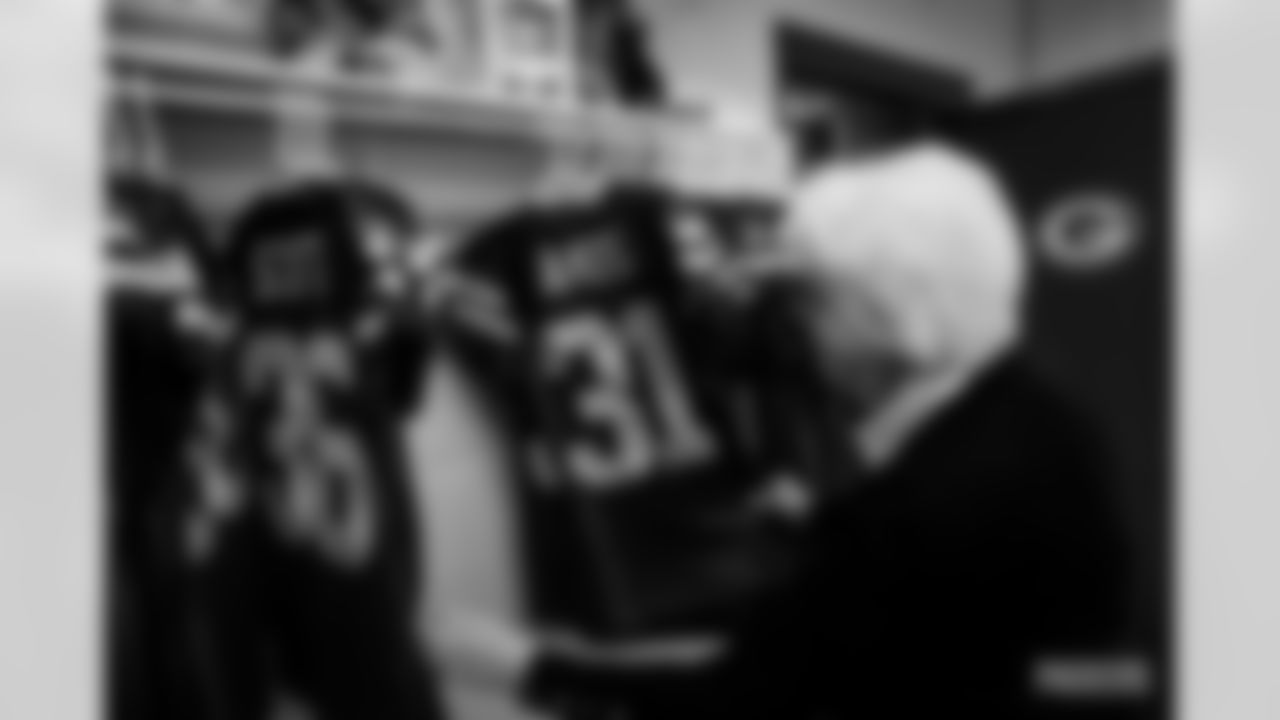
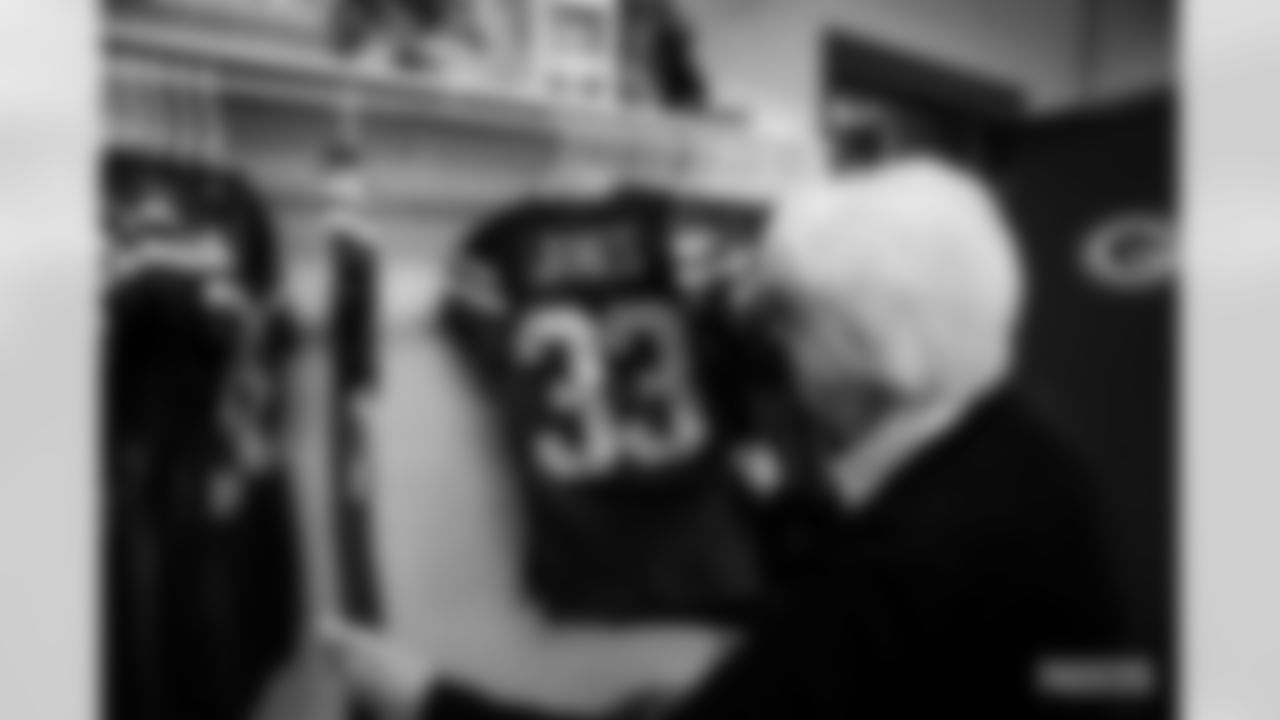
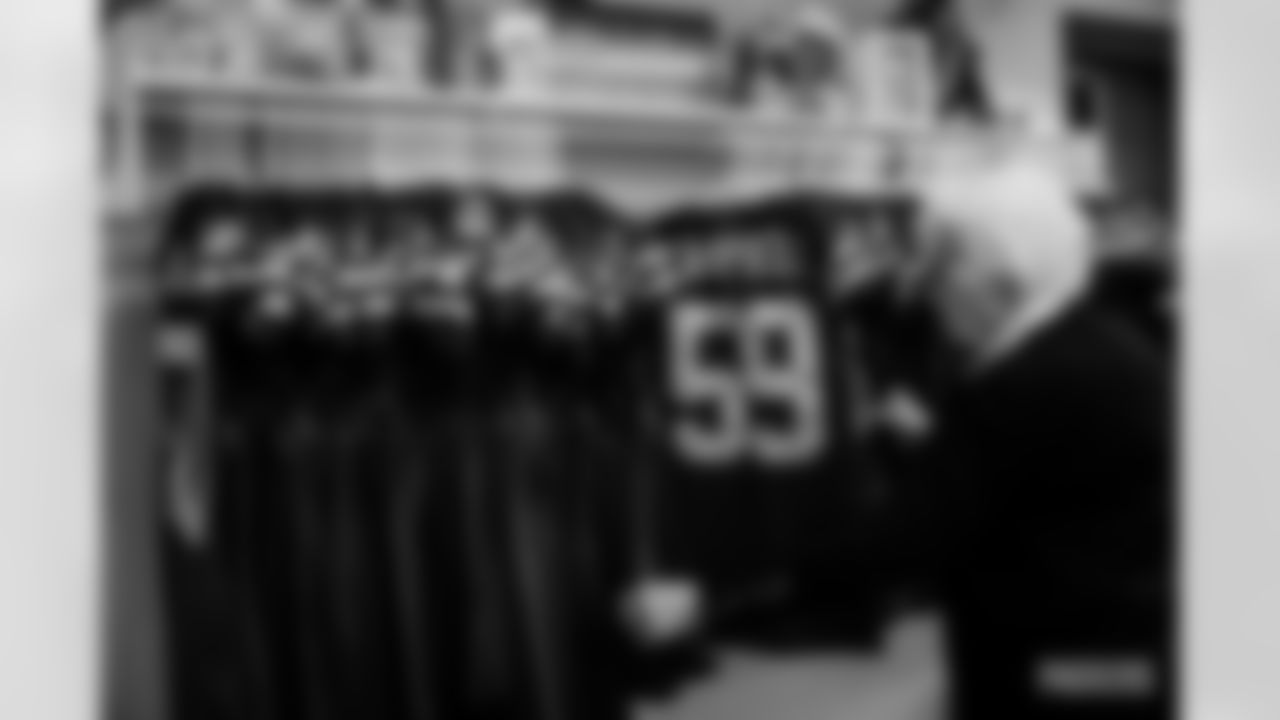

She also loves to problem-solve, such as when a pad needs to be sewn into a shirt to protect an injury. The biggest challenges come when players trade jerseys on game day with an old college teammate, or when a new player is signed Tuesday and needs to be on the practice field Wednesday.
In the first instance, if the same color jersey is needed for the next game, it likely will arrive from the manufacturer with very little time for the alterations.
In the second case, there's no time to order anything. So either a stock practice jersey with the proper number is pulled and a new nameplate put on, or one is built from scratch overnight.
"If they get signed on Tuesday night and they're out there Wednesday for practice, we have them ready," Switzer said. "We've done them start to finish. That's a crunch. If you only sign one, that's not so bad, but if you sign two or three …
"We didn't used to work Tuesdays, but we work Tuesdays now."
After 27 years, Switzer has plenty of stories, all of which she tells with a mix of playfulness, seriousness, and reverence, if appropriate.
There's the one misspelling she's ever had on a nameplate, just a few years into her time with the team, when former first-round draft pick and Heisman Trophy finalist David Klingler was signed as a backup quarterback for training camp.
Switzer heard "Klinger" over the phone when the call came about the jersey request, and ever since all names are written down and checked on paper before the jersey leaves her sewing room.
There's the picture she has of Aaron Rodgers, before his first press conference in Green Bay upon getting drafted in 2005, watching her put the finishing touches on his jersey before he walked out for pictures.
"He's in the sewing room looking over my shoulder as I'm putting the name plate on," she said. "He wanted to see it. No kidding. He just stood there and watched me, and if he thanked me once, he thanked me three times."
One time Bart Starr came back for a special game-day appearance, but his jersey was too long.
"Red brought him in, and Bart took off the jersey and said, 'Can you shorten it two inches for me?'" she recalled. "He stood there and waited for me to finish it. I was just stunned. He's like a rock star and I get to hem this jersey for him."
Another time referee Ed Hochuli forgot his official jersey for a noon game at Lambeau, and Switzer came to the rescue.
Fortunately, another member of Hochuli's crew had a spare, but it was up to Switzer to get the "R" and Hochuli's No. 85 on the back by 11 a.m. She used newswire photos to find the exact font in her computer and then went to work.
"Now, we are a green and gold team, so I don't have a lot of black in that sewing room," she said. "But I needed black lettering, and I had some black felt or fleece, I don't remember. It was not something we would normally use. I put a backing on that, and we kept printing the number until we got it big enough, the right size and everything, and we had to cut it out.
"I had a small amount of fabric, there was not much room for a mistake, and when he walked out on the field it was perfect."
The story was referenced in a Sports Illustrated piece on Hochuli 10 years ago but only mentioned "the Packers' seamstress," not Switzer by name.
Last but not least there was the young fan during a long ago training camp, waiting outside the old office entrance with his bike for a player to ride.
"He came up to me and said, 'You have to be somebody famous because I see you here every day. Can you sign my helmet?'" Switzer said, giggling at the memory.
"So some little kid somewhere, if his mom kept the helmet, has a Marge Switzer autograph. He kept seeing me, so I had to be somebody important."
More important than the humble seamstress would ever consider herself, though she'll always remember the time Aaron Kampman stopped a stampede of players exiting a team meeting so she and her colleagues could cross the hallway safely. Her work is widely appreciated if never fully understood by those inside or outside the team.
Retirement will allow for more time to be spent with her four grandchildren, and to get back to traveling as the world moves on from the pandemic.
The last trip she had scheduled was to Peru in March 2020, but she never got into the country, just as Rodgers escaped it before the pandemic shut everything down.
"I'm going to quilt in the winter, garden in the summer, and travel whenever I can," Switzer said. "That's what's in store for Marge Switzer."
If she's ever spotted in a Packers jersey, there's no telling what number it'll have. But one thing's for certain – it'll fit. Perfectly.















